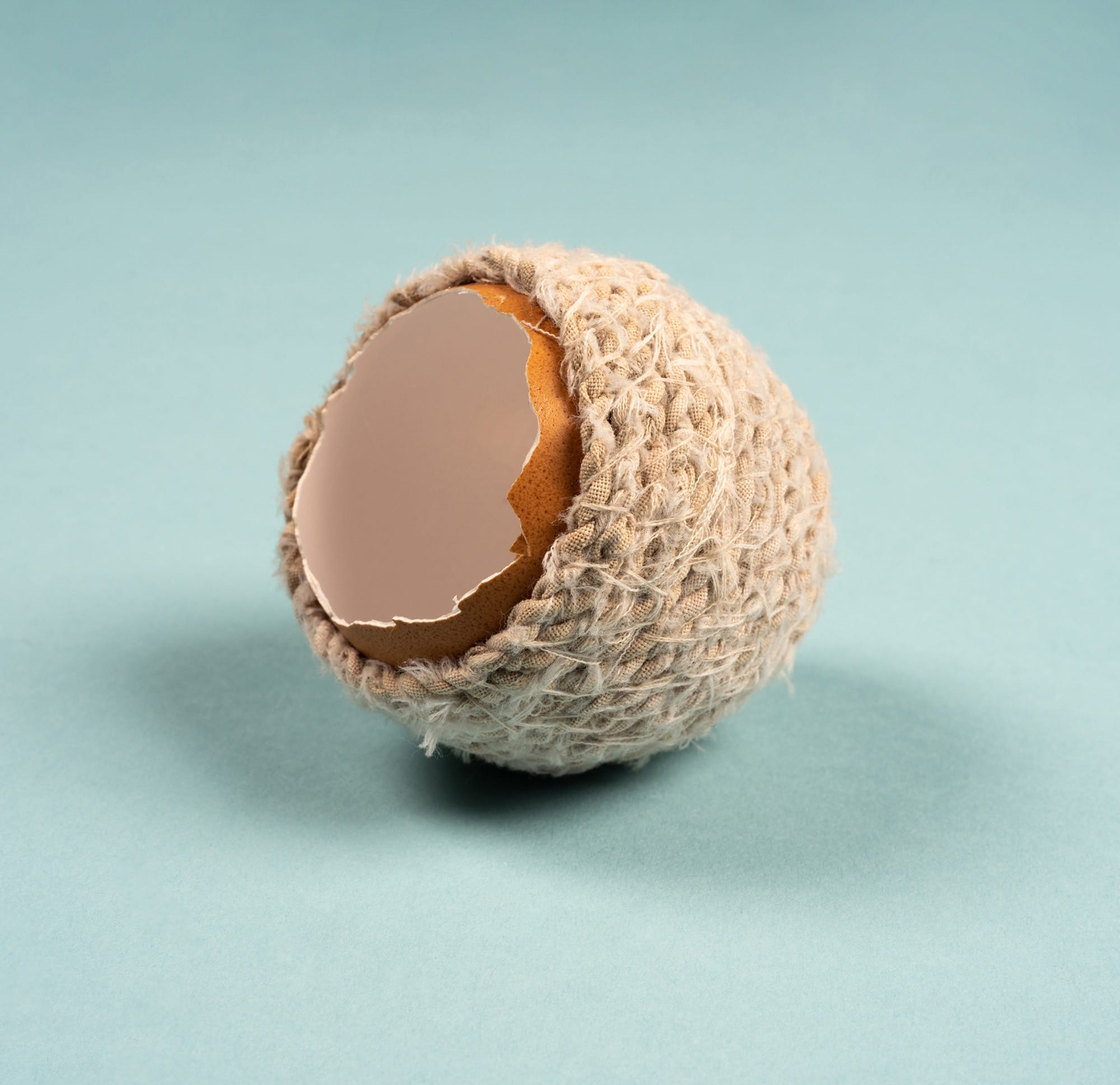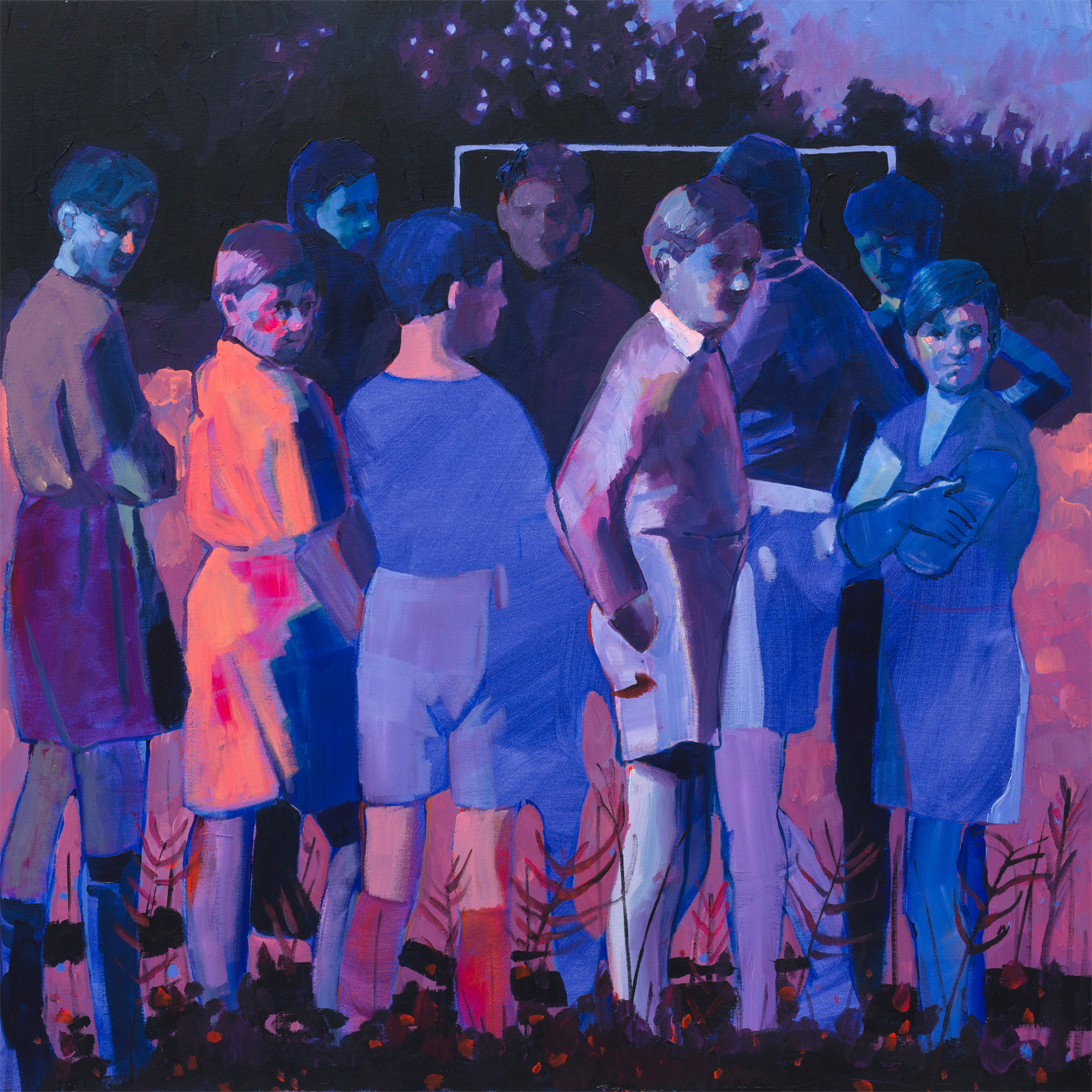If a white crane were to choose a pair of boots, would he gravitate toward knee-high lace-ups or balance his talons in yellow tabi stilettos?
Young In Hong fashioned a collection of shoes with these long-legged birds in mind. Titled “White Cranes and Snowfall,” the playful sculptures are made from woven sedges and nested in a shallow field of pebbles, intertwining references to avian life and endangered craft traditions.
Based in Bristol, Hong visited Korea in the winter of 2023 and witnessed a flock of rare cranes migrating to the demilitarized zone dividing the peninsula. “The once blood-stained DMZ has now become an ecological paradise for the cranes,” she shares. “When nature is left alone it can replenish its lives, and when we as humans observe other species more carefully, we can learn something from them that alters our way of being in the world.”
Researchers estimate that in the seven decades since the zone was established, about “1,200 plant species, 83 fish varieties, 51 different mammals, and numerous birds, insects, and microorganisms” have thrived in the area, many of which were previously endangered or threatened.
Observing the birds inspired the latest series in Hong’s growing collection of avian footwear. Each references jipsin, flat sandals woven from straw and largely worn by farmers and the working class throughout Korea. Affordable and widely available, the shoes would wear down quickly—a long day’s walk could burn through a pair—and people across the socioeconomic order knew how to make them. Straw is biodegradable, too, making jipsin naturally sustainable.
To learn the craft practiced for generations, Hong began working with Choong Kyung Lee, a straw-weaving master from Asan in 2021. Together, they created numerous projects, including shoes fit for a baby elephant, giraffe, kangaroo, heron, gorilla, and bear. “For me, the collaboration with Lee was a journey to open up my eyes towards natural fibre weaving, a part of the history of Korea that has not been thoroughly written about,” Hong shared.
For “White Cranes and Snowfall,” the artist pulled out specific personalities to inspire each design rather than thinking of the birds as anonymous entities. Displayed together, the sculptures become a stand-in for community and gathering—and perhaps a cheeky and yet urgent plea to imagine oneself in another’s shoes, even if those shoes belong to another species. The artist adds:
For me, fictionalising the collective white cranes, and visualising them through humorously designed shoes, is to remind us of the fact that birds are like us, expressing tastes and preferences, also by having individually different characters and personalities.
“White Cranes and Snowfall” is on view through November 7 at Secession in Vienna. Two of Hong’s textile works are also on view this month as part of the 7th Changwon Sculpture Biennale, and she’s currently preparing for two solo shows, one opening at Art Sonje Center in May and another at PKM Gallery in September. Peruse an archive of her works on her website and Instagram.
Do stories and artists like this matter to you? Become a Colossal Member today and support independent arts publishing for as little as $7 per month. The article Eight Pairs of Woven Shoes Fit for Cranes Roost in a Field of Pebbles appeared first on Colossal.


